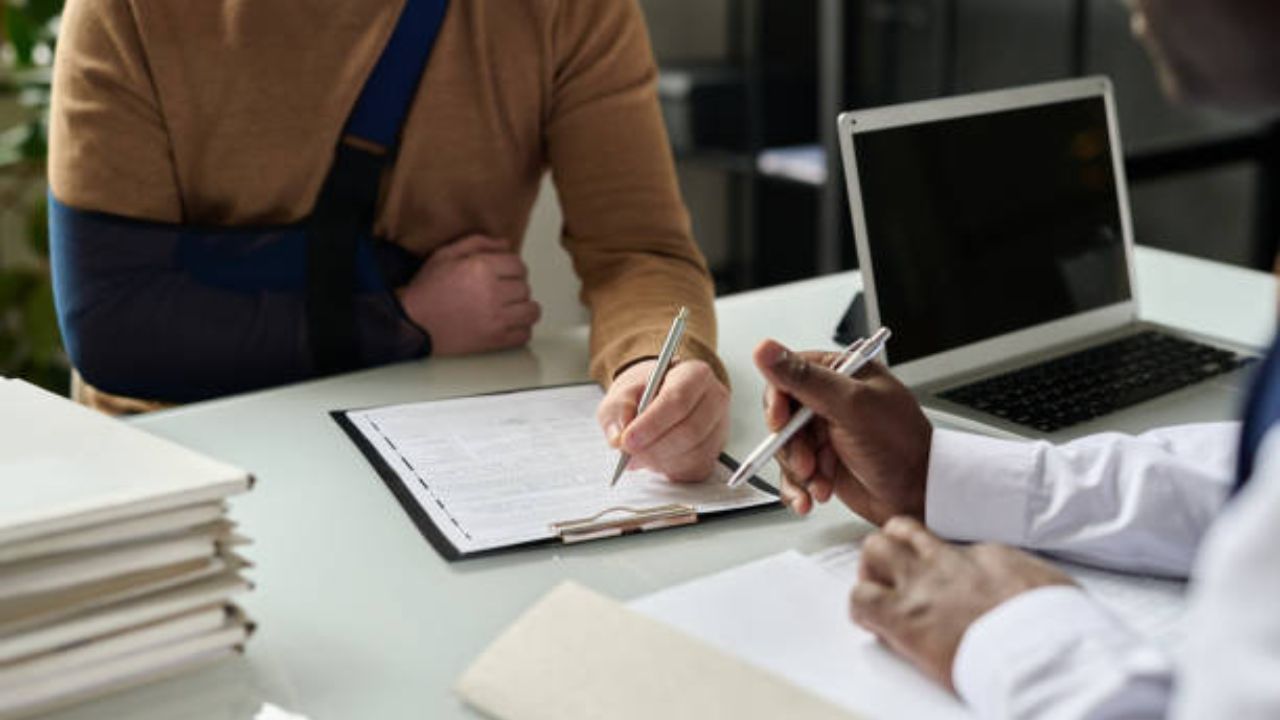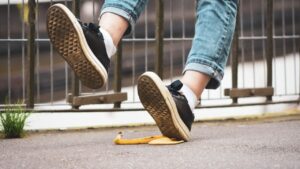
Slip and fall incidents are not only common but also pose a significant threat to personal safety and well-being. Whether it’s a slippery surface, uneven flooring, or poor lighting, these accidents can happen anywhere and to anyone. As a Riverside attorney who has dealt with numerous slip and fall cases, I understand the legal implications and the impact these incidents can have on individuals’ lives. In this extensive guide, we will delve deeper into the subject, exploring additional tips and strategies to prevent slip and fall incidents, drawing on my legal expertise and experience in handling such cases.
Understanding the Legal Ramifications
Before delving into comprehensive prevention strategies, it’s crucial to understand the legal aspects associated with slip and fall incidents. Property owners have a responsibility to maintain safe premises, and failure to do so can result in legal consequences. In many cases, the injured party may be entitled to compensation for medical bills, lost wages, and other damages. However, preventing these incidents is far better than dealing with their aftermath. Let’s explore some practical tips to minimize the risk of slip and fall accidents.
For a Free Legal Consultation, Call (310) 321-4800
Regular Maintenance of Walkways and Floors
One of the most common causes of slip and fall incidents is poorly maintained walkways and floors. Property owners must prioritize regular maintenance to address issues such as uneven surfaces, cracks, and potholes. A proactive approach to fixing these problems can prevent accidents and protect both visitors and residents.
Regular maintenance involves not only fixing visible issues but also conducting routine checks for potential hazards. This can include examining the condition of flooring materials, checking for loose tiles, and ensuring that all surfaces are level and stable. By investing in regular maintenance, property owners can significantly reduce the risk of slip and fall incidents and create a safer environment for everyone.

Adequate Signage
Effective communication is key to preventing slip and fall incidents. Placing clear and visible signs to warn of potential hazards, wet floors, or uneven surfaces can significantly reduce the risk of accidents. This is especially important in areas where construction or maintenance work is underway, as unsuspecting individuals may not be aware of the potential dangers.
The placement of signage is crucial. Signs should be strategically positioned in areas where hazards are present, such as near wet floors, construction zones, or areas with uneven surfaces. Additionally, signs should be easy to read and understand, using universally recognized symbols and clear language. Property owners should also ensure that signs are well-maintained and replaced when they become faded or damaged.
Click to Contact Our Personal Injury Lawyers Today
Proper Lighting
Inadequate lighting is a common factor contributing to slip and fall incidents, especially in parking lots, stairwells, and entrances. Property owners should invest in proper lighting to ensure that all areas are well-lit, allowing individuals to navigate safely. This not only enhances security but also reduces the chances of accidents due to poor visibility.
Proper lighting involves not only ensuring that there is adequate illumination but also addressing any dark or shadowed areas. Property owners should regularly check and replace bulbs, use energy-efficient lighting solutions, and consider installing motion-activated lights in areas with less consistent foot traffic. Well-lit spaces not only contribute to safety but also create a more welcoming and secure environment.
Complete a Free Case Evaluation Form Now
Slip-Resistant Flooring
Choosing slip-resistant flooring materials can go a long way in preventing accidents. In areas prone to spills or wet conditions, such as kitchens, bathrooms, or entranceways, using slip-resistant tiles or mats can provide an additional layer of protection. Property owners should carefully select flooring options that prioritize safety.
When selecting flooring materials, considerations should include the type of foot traffic the area experiences, the likelihood of spills or water exposure, and the overall design aesthetic. Slip-resistant coatings can also be applied to existing flooring to enhance traction. By investing in slip-resistant flooring solutions, property owners can significantly reduce the risk of slip and fall incidents and create a safer environment for occupants.
Regular Inspections
Regular inspections of the property are essential to identify potential hazards and address them promptly. This proactive approach allows property owners to stay ahead of any safety concerns and take preventive measures. Conducting thorough inspections on a scheduled basis ensures that issues are spotted early, reducing the risk of slip and fall incidents.
Inspections should be comprehensive and cover all areas of the property, including indoor and outdoor spaces. Property owners should create a checklist that includes common hazards such as uneven surfaces, loose handrails, and wet floors. Regular inspections not only contribute to accident prevention but also demonstrate a commitment to safety and due diligence on the part of the property owner.
Employee Training
For businesses, training employees on proper safety measures is crucial. Staff should be educated on the importance of promptly cleaning up spills, maintaining clear walkways, and promptly reporting any potential hazards. By fostering a culture of safety within the workplace, businesses can actively contribute to accident prevention.
Employee training should cover a range of topics, including the proper use of warning signs, the importance of reporting maintenance issues, and techniques for safely addressing spills or other potential hazards. Regular refresher courses can reinforce these principles and keep safety at the forefront of employees’ minds. Additionally, businesses should involve employees in the safety process, encouraging them to identify and report potential hazards.
Handrail Installation
In areas with stairs or ramps, handrails provide essential support and stability. Property owners should ensure that handrails are securely installed and meet safety standards. Regular checks for loose or damaged handrails should be part of routine maintenance.
Handrails should be installed on both sides of staircases and ramps, providing support for individuals going up or down. The height and placement of handrails should adhere to building codes and accessibility standards. Regular inspections should include checking for any signs of wear or damage, such as loose bolts or splintered wood. Properly installed and maintained handrails contribute significantly to preventing slip and fall incidents, especially in areas with elevation changes.
Adequate Snow and Ice Removal
In regions with cold climates, snow and ice can pose significant slip and fall risks. Property owners must have efficient snow removal and de-icing procedures in place during winter months. Keeping walkways clear and applying salt or sand can prevent slippery conditions and reduce the likelihood of accidents.
Snow and ice removal should be a priority, especially in high-traffic areas such as entrances, parking lots, and sidewalks. Property owners should establish a clear plan for snow removal, including the use of snowplows, shoveling, and the application of ice-melting agents. Regular monitoring of weather conditions is essential to ensure timely response and prevent the accumulation of hazardous ice and snow.

Educate and Inform Visitors
Property owners should actively educate visitors about potential hazards and safety measures. This can be achieved through informative signage, brochures, or digital displays highlighting the importance of being cautious and alert. Well-informed visitors are more likely to take necessary precautions, reducing the overall risk of accidents.
Educational materials should be easily accessible and prominently displayed in common areas. They can include information on how to navigate the property safely, what to do in the event of a spill, and the location of emergency exits. Property owners should also consider incorporating safety education into onboarding processes for tenants or employees, ensuring that everyone is aware of the property’s safety protocols.
Last Words
Preventing slip and fall incidents requires a proactive and comprehensive approach. Property owners, whether individuals or businesses, must prioritize safety through regular maintenance, effective communication, and employee training. As a Riverside attorney, I have witnessed the legal consequences of negligence in slip and fall cases. By implementing these tips, individuals and businesses can create safer environments, reducing the risk of accidents and protecting the well-being of everyone on the premises. Remember, an ounce of prevention is worth a pound of cure, especially when it comes to slip and fall incidents. Taking the necessary steps to ensure a safe environment not only protects individuals from harm but also safeguards against potential legal repercussions.
Call or Text (310) 321-4800, or Complete a Free Case Evaluation Form

